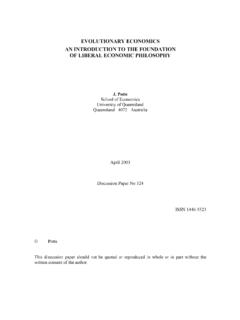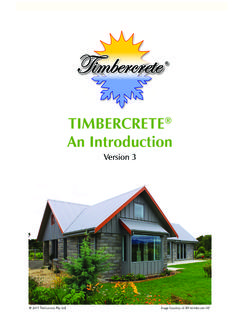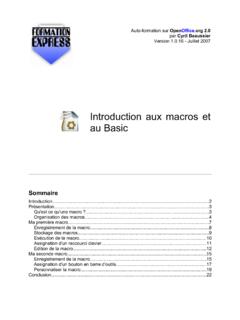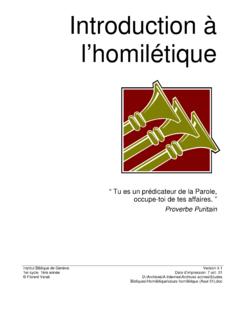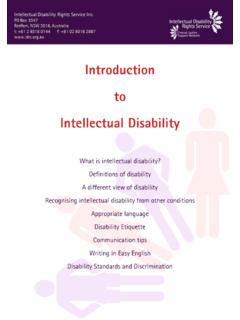Transcription of Introduction to digital systems - nyu.edu
1 Introduction to digital systems Juan P Bello Analogue vs digital (1) Analog information is made up of a continuum of values within a given range At its most basic, digital information can assume only one of two possible values: one/zero, on/off, high/low, true/false, etc. digital Information is less susceptible to noise than analog information Exact voltage values are not important, only their class (1 or 0) The complexity of operations is reduced, thus it is easier to implement them with high accuracy in digital form BUT: Most physical quantities are analog, thus a conversion is needed Analogue vs digital (2) Logical operations (1) Truth table Logical operations (2) These logic gates are the basic building blocks of all digital systems Numeral systems Notation system using a limited set of symbols to express numbers uniquely We are most familiar with the positional, base-10 (decimal), Hindu-Arabic numeral system: Least significant digit, to the right, assumes its own value.
2 As we move to the left, the value is multiplied by the base. Binary system (1) digital systems represent information using a binary system, where data can assume one of only two possible values: zero or one. Appropriate for implementation in electronic circuitry, where values are characterized by the absence/presence of an electrical current flow. Pulse code modulation (PCM) is used to represent binary numbers electrically, as a string of high and low voltages Binary system (2) The binary system represents numbers using binary digits (bits) where each digit corresponds to a power of two. The total (in decimal) is 128 + 64 + 32 + 4 + 1 = 229 Since we begin counting from zero, n bits can represent 2n values: from 0 to 2n 1 inclusive ( 256 values, from 0 to 255, for 8 bits).
3 Groups of bits form binary words binary 1 1 1 0 0 1 0 1 Power of two 27 26 25 24 23 22 21 20 decimal 128 64 32 16 8 4 2 1 Binary system (3) binary 1 1 1 0 0 1 0 1 Power of two 27 26 25 24 23 22 21 20 decimal 128 64 32 16 8 4 2 1 LSB x 20 MSB x 27 4 bits = 1 nybble 4 bits = 1 nybble 8 bits = 1 byte (from by eight) byte byte byte MSbyte LSbyte binary word Unit Value Kilobyte (KB) 1024 Bytes Megabyte (MB) 1024 KBytes Gigabyte (GB) 1024 MBytes Terabyte (TB) 1024 GBytes Binary system (4) How to convert from decimal to binary? Repeat division by 2 Example: Convert 2910 to binary 29/2 = 14 remainder 1 (LSB) 14/2 = 7 remainder 0 7/2 = 3 remainder 1 3/2 = 1 remainder 1 1/2 = 0 remainder 1 (MSB) 2910 => 111012 Octal system To avoid writing down long binary words, it is often easier to use larger base systems .
4 Two commonly-used systems are octal and hexadecimal. The octal number system is base eight, values can be represented using an 8-symbol dictionary: 0-7 To convert from binary to octal, binary numbers are grouped on 3-bits words such that: 0002 = 08, 001 = 1, 010 = 2, 011 = 3, 100 = 4, 101 = 5, 110 = 6, and 111 = 7 To convert from octal to decimal: 248 = 2x81 + 4x80 = 2010 From decimal to octal (and from there to binary), Repeat divide by 8: 20/8 = 2 remainder 4 (LSB) 2/8 = 0 remainder 2 (MSB) 2010 = 248 Hexadecimal numbers The hexadecimal number system (AKA hex) is a base 16 notation. It is the most popular large-base system for representing binary numbers.
5 Values in MIDI implementation charts are often expressed as hexadecimal numbers. Each symbol represents 4-bits (1 nybble), that can take one of 16 different values: the values 0-9 are represented by the digits 0-9, and the values 10-15 are represented by the capital letters A-F. Conversions are performed as with the other number systems . Bin Hex Dec Bin Hex Dec Bin Hex Dec Bin Hex Dec 0000 0 0 0100 4 4 1000 8 8 1100 C 12 0001 1 1 0101 5 5 1001 9 9 1101 D 13 0010 2 2 0110 6 6 1010 A 10 1110 E 14 0011 3 3 0111 7 7 1011 B 11 1111 F 15 A/D Conversion (1) The conversion of an analog (continuous) voltage x(t) into a discrete sequence of numbers x(n) is performed by an Analog-to- digital Converter (ADC) The ADC samples the amplitude of the analog signal at regular intervals in time, and encodes (quantizes) those values as binary numbers.
6 The regular time intervals are known as the sampling period (Ts) and are determined by the ADC clock. This period defines the frequency at which the sampling will be done, such that the sampling frequency (in Hertz) is: fs=1/TsA/D Conversion (2) The outgoing sequence x(n) is a discrete-time signal with quantized amplitude Each element of the sequence is referred to as a sample. ADC ..,x[n 1],x[n],x[n+1],..A/D Conversion (3) Sampling is the process of converting a continuous signal into a discrete sequence Our intuition tells us that we will loose information in the process However this is not necessarily the case and the sampling theorem simply formalizes this fact It states that in order to be able to reconstruct a bandlimited signal, the sampling frequency must be at least twice the highest frequency of the signal being sampled (Nyquist, 1928) The Nyquist frequency A/D Conversion (4) What happens when fs < 2B There is another, lower-frequency, signal that share samples with the original signal (aliasing).
7 Related to the wagon-wheel effect: LPF Anti-aliasing A/D Conversion (5) The accuracy of the quantization depends on the number of bits used to encode each amplitude value from the analog signal. Example: to quantize the position of a control knob, it is necessary to determine the nearest point of the scale This conversion implies an error (max. half a point) fs=1/TsA/D Conversion (6) Quantization error: is the distortion produced by the rounding-up of the continuous values of the analog signal during the ADC process to the values allowed by the bit-resolution of each sample. This depends on the quantization accuracy (# of bits) Example: a sound with progressively worsening quantization noise: D/A Conversion Just as we used an ADC to go from x(t) to x(n), we can turn a discrete sequence into a continuous voltage level using a digital -to-analog converter (DAC).
8 However, the quantized nature of the digital signal produces a Zero-Order Hold effect that distorts the converted signal, introducing some step (fast) changes (know as imaging). To avoid this, we use an anti-imaging filter (AKA smoothing or reconstruction filter) that smoothes out those fast changes. Useful References Francis Rumsey (1994). MIDI systems and Control , Focal Press. Chapter 1: An Introduction to Computer systems and Terminology Francis Rumsey and Tim McCormick (2002). Sound and Recording: An Introduction , Focal Press. Chapter 13: MIDI Peter Lau (2001). digital System Tutorial on the Web , University of Sydney: Curtis Roads (1996).
9 The Computer Music Tutorial , The MIT Press
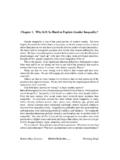
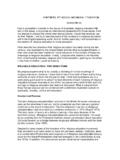

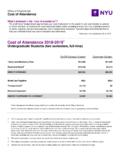
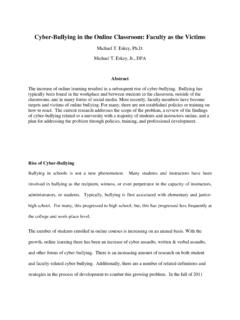
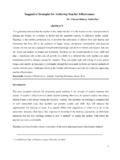
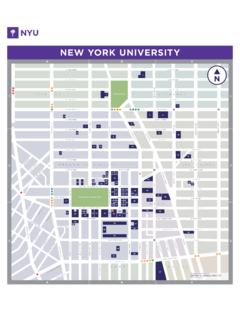

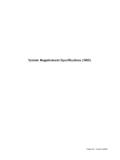
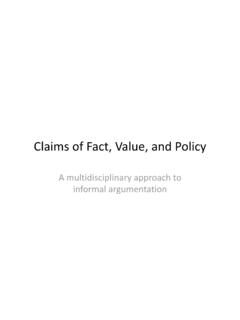
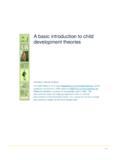
![naray[sU´m [Narayana Suktam] Introduction - …](/cache/preview/2/c/f/7/f/6/4/f/thumb-2cf7f64f54385035062820f105924f4c.jpg)
